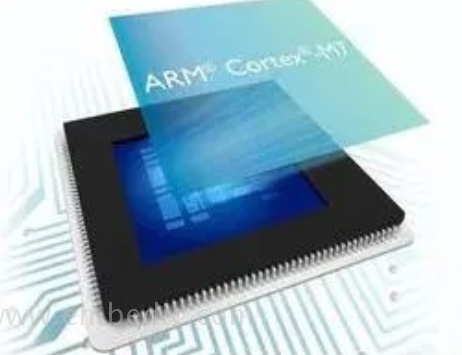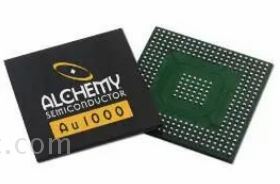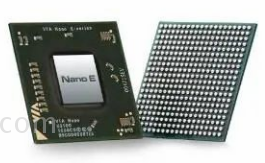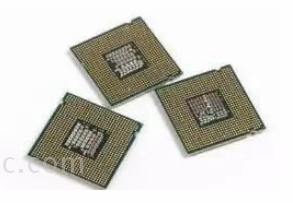[Guide] The embedded processor is the core of the embedded system and the hardware unit that controls and assists the operation of the system. The scope is extremely wide, from the initial 4-bit processor, the 8-bit single-chip microcomputer that is still in large-scale application, to the latest 32-bit and 64-bit embedded CPU that is widely favored. Since the advent of microprocessors, embedded systems have developed rapidly, and embedded processors are undoubtedly the core part of embedded systems.
The embedded processor is the core of the embedded system and the hardware unit that controls and assists the operation of the system. The scope is extremely wide, from the initial 4-bit processor, the 8-bit single-chip microcomputer that is still in large-scale application, to the latest 32-bit and 64-bit embedded CPU that is widely favored.
Since the advent of microprocessors, embedded systems have developed rapidly. Embedded processors are undoubtedly the core part of embedded systems, and embedded processors are directly related to the performance of the entire embedded system. Under normal circumstances, embedded processors are considered to be the general term for the core components of computing and control in embedded systems.
There are more than 1,000 types of processors with embedded functions in the world, and popular architectures include more than 30 series such as MCU and MPU. In view of the broad development prospects of embedded systems, many semiconductor manufacturers produce embedded processors on a large scale, and the company’s independent design of processors has also become a major trend in the embedded field in the future. Among them, there are various types from single-chip microcomputers, DSPs to FPGAs. All kinds of varieties are getting faster and faster, with better performance and lower prices. The addressing space of the embedded processor can be from 64kB to 16MB, the processing speed can reach 2000 MIPS as fast as possible, and the package ranges from 8 pins to 144 pins.

Features
The embedded microprocessor is similar to the microprocessor design of the ordinary desktop computer in the basic principle, but the working stability is higher, the power consumption is lower, and the adaptability to the environment (such as temperature, humidity, electromagnetic field, vibration, etc.) is strong , Smaller size, and more integrated functions. In the field of desktop computers, the main indicator when comparing processors is the computing speed. From the 386 computer at 33MHz to the PenTIum 4 processor at 3GHz, the increase in speed is the change that users are most concerned about. Field, the situation is completely different. The choice of the embedded processor must be based on the design requirements, in the performance, power consumption, function, size and packaging form, SoC level, cost, commercial considerations and many other factors to compromise, choose the best.
The embedded processor is the core of the embedded system, and the embedded processor is responsible for the important tasks of control and system work, making the host device function intelligent, flexible design and easy to operate. In order to complete these tasks reasonably and efficiently, generally speaking, embedded processors have the following characteristics: strong real-time multi-task support, storage area protection, expandable microprocessor structure, strong interrupt processing capabilities, low power Consumption.
The core of an embedded system is an embedded microprocessor. Embedded microprocessors generally have the following 4 characteristics:
1) It has strong support for real-time multitasking, can complete multitasking and has a short interrupt response time, thereby reducing the execution time of internal code and real-time core to a minimum.
2) It has a powerful storage area protection function. This is because the software structure of the embedded system has been modularized, and in order to avoid false cross-effects between software modules, it is necessary to design a powerful storage area protection function, which is also conducive to software diagnosis.
3) Scalable processor structure to develop embedded microprocessors with the highest performance to meet the application most quickly.
4) Embedded microprocessors must have very low power consumption, especially for battery-powered embedded systems used in portable wireless and mobile computing and communication devices. The power consumption is only mW or even μW.
classification
The embedded microprocessor (Micro Processor Unit, MPU) evolved from the CPU in general-purpose computers. Its characteristic is that it has a 32-bit or more processor, with higher performance, and of course its price is correspondingly higher. But unlike computer processors, in actual embedded applications, only functional hardware closely related to embedded applications is retained, and other redundant functional parts are removed, so that embedded applications can be implemented with the lowest power consumption and resources. special requirements. Compared with industrial control computers, embedded microprocessors have the advantages of small size, light weight, low cost, and high reliability. The main types of embedded processors are Am186/88, 386EX, SC-400, Power PC, 68000, MIPS, ARM/StrongARM series, etc.
Among them, Arm/StrongArm is an embedded microprocessor specially developed for handheld devices and belongs to the mid-range price.
The typical representative of the embedded microcontroller (Microcontroller Unit, MCU) is the single-chip microcomputer. From the appearance of the single-chip microcomputer in the late 1970s to today, although it has passed more than 20 years of history, this 8-bit electronic device still has a very Wide range of applications. The microcontroller chip integrates ROM/EPROM, RAM, bus, bus logic, timer/counter, watchdog, I/O, serial port, pulse width modulation output, A/D, D/A, Flash RAM, EEPROM, etc. Kinds of necessary functions and peripherals. Compared with embedded microprocessors, the biggest feature of microcontrollers is monolithic and greatly reduced in size, which reduces power consumption and cost, and improves reliability. Microcontrollers are the mainstream of the embedded system industry. The on-chip peripheral resources of a microcontroller are generally richer and suitable for control, so it is called a microcontroller.
Because of the low price and excellent functions of MCU, it has the most variety and quantity. The more representative ones include 8051, MCS-251, MCS-96/196/296, P51XA, C166/167, 68K series and MCU 8XC930/ 931, C540, C541, and support I2C, CAN-Bus, LCD and many dedicated MCU and compatible series. MCU accounts for approximately 70% of the market share of embedded systems. The Avr MCU produced by Atmel is highly cost-effective due to its integration of FPGA and other devices, which will inevitably promote the development of the MCU.
Embedded DSP processor (Embedded Digital Signal Processor, EDSP) is a processor dedicated to signal processing. It is specially designed in terms of system structure and instruction algorithm, and has high compilation efficiency and instruction execution speed. DSP has been widely used in various instruments such as digital filtering, FFT, and spectrum analysis.
The theoretical algorithm of DSP has appeared in the 1970s, but since the specialized DSP processor has not yet appeared, this theoretical algorithm can only be realized by discrete components such as MPU. The lower processing speed of MPU cannot meet the algorithm requirements of DSP, and its application field is limited to some cutting-edge high-tech fields. With the development of large-scale integrated circuit technology, the world's first DSP chip was born in 1982. Its computing speed is dozens of times faster than MPU, and it has been widely used in speech synthesis and codec. By the mid-1980s, with the advancement and development of CMOS technology, the second generation of DSP chips based on CMOS technology came into being, and its storage capacity and computing speed were doubled, becoming the basis of voice processing and image hardware processing technology. By the late 1980s, the computing speed of DSP was further improved, and the application field expanded from the above-mentioned scope to communications and computers. After the 1990s, DSP developed to the fifth generation of products, with higher integration and a wider range of applications.
The most widely used is TI's TMS320C2000/C5000 series. In addition, Intel's MCS-296 and Siemens' TriCore also have their own applications.
Embedded system on chip (System On Chip): SoC pursues the most inclusive integrated device of the product system, which is one of the hot topics in the embedded application field. The biggest feature of SOC is that it successfully realized the seamless integration of software and hardware, and directly embedded the code module of the operating system in the processor chip. And SOC has extremely high comprehensiveness, using VHDL and other hardware description languages inside a silicon chip to realize a complex system. Users no longer need to draw huge and complex circuit boards and make a little connection and soldering like traditional system design. They only need to use precise language and comprehensive timing design to directly call various general-purpose processor standards in the device library. After the simulation, it can be directly delivered to the chip manufacturer for production. Since most of the system components are inside the system, the entire system is particularly simple, which not only reduces the volume and power consumption of the system, but also improves the reliability of the system and improves the design and production efficiency.
Since SOCs are often dedicated, most of them are unknown to users. A typical SOC product is Philips Smart XA. A few general-purpose series such as TriCore of Siemens, M-Core of Motorola, some ARM series devices, Neuron chip jointly developed by Echelon and Motorola, etc.
It is expected that in the near future, some large chip companies will repel competitors by launching mature SOC chips that can occupy most markets. SOC chips will also play an important role in applications such as sound, image, film and television, network and system logic.

(1) Embedded ARM microprocessor (embedded microprocessor structure)
Origin and development of ARM microprocessor
ARM (Advanced RISC Machines) can be considered as the name of a company, a generic term for a type of microprocessor, or as a technology name. At present, the microprocessor adopting the Intellectual Property (IP) core of ARM technology is what we usually call ARM microprocessor. It is a high-performance, low-power 32-bit microprocessor, which is widely used in embedded systems. Microprocessor applications based on ARM technology account for more than 75% of the market share of 32-bit RISC microprocessors, and ARM technology is gradually infiltrating all aspects of our lives. ARM9 represents the mainstream processor of ARM, and has been widely used in handheld phones, set-top boxes, digital cameras, GPS, personal digital assistants, and Internet devices.
Application field of ARM microprocessor
ARM microprocessor is a processor with a very wide range of applications. So far, the application of ARM microprocessor and technology has almost spread across industrial control, consumer electronics, communication systems, network systems, wireless systems and other product markets. , Go deep into various fields.
1. Industrial control field: As a 32 RISC architecture, microcontroller chips based on ARM core not only occupy most of the high-end microcontroller market, but also gradually expand to the low-end microcontroller application field. ARM microcontrollers The low power consumption and high cost performance of the device pose a challenge to the traditional 8-bit/16-bit microcontroller.
2. The field of wireless communication: At present, more than 85% of wireless communication equipment has adopted ARM technology. ARM has consolidated its position in this field with its high performance and low cost.
3. Network application: With the promotion of broadband technology, ADSL chips using ARM technology are gradually gaining a competitive advantage. In addition, ARM has optimized its voice and video processing upstream and has received extensive support, which also poses a challenge to the application of DSP.
4. Consumer electronic products: ARM technology is widely used in popular digital audio players, digital set-top boxes and game consoles.
5. Imaging and security products: Most popular digital cameras and printers now use ARM technology. The 32-bit SIM smart card in the mobile phone also uses ARM technology.
Features of ARM microprocessor based on RISC architecture
1. Small size, low power consumption, low cost and high performance;
2. Support Thumb (16-bit)/ARM (32-bit) dual instruction set, which is well compatible with 8-bit/16-bit devices;
3. A large number of registers are used, and the instruction execution speed is faster;
4. Most data operations are completed in registers;
5. The addressing mode is flexible and simple, and the execution efficiency is high;
6. The instruction length is fixed;

(2) Embedded MIPS processor
Overview of the development of MIPS processors
MIPS is a very popular RISC processor in the world. MIPS means "MicroprocessorwithoutInterlockedpipedstages" (MicroprocessorwithouTInterlockedpipedstages), and its mechanism is to use software as much as possible to avoid data-related problems in the pipeline. MIPS Technology Company is a well-known chip design company in the United States. It uses Reduced Instruction System Computing Architecture (RISC) to design chips. It designs and manufactures high-performance, high-end and embedded 32-bit and 64-bit processors. Aspect occupies an important position.
The system structure and design concept of MIPS are relatively advanced, and its instruction system has been very mature through the development of general processor instruction systems MIPSI, MIPSII, MIPSIII, MIPSIV to MIPSV, and embedded instruction systems MIPS16, MIPS32 to MIPS64.
In the design concept, MIPS emphasizes the collaboration of software and hardware to improve performance while simplifying hardware design. Compared with the complex instruction system computing structure (CISC) adopted by Intel, RISC has the advantages of simpler design and shorter design cycle, and can apply more advanced technologies to develop faster next-generation processors.
MIPS is one of the earliest commercial RISC architecture chips. The new architecture integrates all the original MIPS instruction sets and adds many more powerful functions.
Application of MIPS processor
In general, MIPSR series microprocessors are used to build SGI's high-performance workstations, servers and supercomputer systems. In terms of embedded, MIPSK series microprocessors are currently one of the most used processors second only to ARM (MIPS was the most used processor in the world before 1999), and its application areas cover game consoles, routers, Laser printers, handheld computers and other aspects.
(3) PowerPC
The PowerPC Architecture Specification (PowerPCArchitectureSpecificaTIon) is a chip developed by IBM (International Business Machines Corporation), Apple (Apple) and Motorola (Motorola) in the 1990s, and manufactures multi-processor computers based on PowerPC .
The PowerPC architecture is characterized by good scalability, convenience and flexibility. It is a 64-bit specification (also includes a 32-bit subset). Almost all conventionally available PowerPC (except for the new model IBMRS/6000 and all IBMpSeries high-end servers) are 32-bit.
PowerPC market share is not very high, but it is used a lot in the control and management of communication systems.
(4) Embedded X86 processor
x86 is a standard number abbreviation of the Intel general-purpose computer series, and it also identifies a set of general computer instructions. X has nothing to do with the processor. It is a simple wildcard definition for all *86 systems, for example: i386, 586, Pentium. Since the early Intel CPU numbers are like 8086, 80286, because the entire series of CPUs are instruction-compatible, X86 is used to identify the instruction set used. Today's Pentium, P2, P4, Celeron series are all It supports the X86 instruction system, so all belong to the X86 family.
x86 has become the standard for computing platforms with unparalleled performance-price advantages. But x86 is still based on 32-bit technology—it can't do anything for high-end enterprise server and workstation applications. Compared with ARM architecture products, embedded X86 processors generally have much higher performance, but the power consumption is also much higher. Although it can still maintain fanless operation, it cannot be used for PDAs, smart phones, etc. *Battery-operated handheld computing products. The real demand for embedded X86 processors is network terminals, thin clients, low-cost/low-energy PCs, home consumer electronics, POS terminals, and other fields that require PC software continuity. The corresponding equipment is relatively large and does not depend on *Battery operation, but requires high performance, low energy consumption, low noise and high reliability. In 2006, X86 introduced the first dual-core processor.
Compared with ARM and MIPS, X86 has a narrower application range for embedded processors. It is mainly used in desktop and low-end server processors.

(5) Embedded DSP processor
DSP is a dedicated processor for high-speed real-time processing after the analog signal is converted into a digital signal. Its processing speed is 10-50 times faster than the fastest CPU. In today's digital age, DSP has become a basic device in the fields of communications, computers, and consumer electronics. Industry insiders predict that DSP will be the fastest-growing electronic product in integrated circuits in the future, and it will become a decisive factor in the upgrading of electronic products.
DSP belongs to ModifiedHarvard architecture, that is, it has two internal buses: data bus and program bus. The program and the data storage space are separated, each has an independent address bus and data bus, addressing and reading can be performed at the same time, and it has reached 9 billion floating point operations per second (9000MFLOPS). It uses pipeline operations, and the execution of each instruction is divided into several steps such as instruction fetching, decoding, fetching, and execution, which are completed by multiple functional units on the chip. It is equivalent to parallel execution of multiple instructions, which greatly improves the computing speed. Multiplication instructions are completed in a single cycle, optimizing a large number of repeated multiplications in algorithms such as convolution, digital filtering, FFT, correlation, and matrix operations. The use of circular addressing (Circular addressing) bit-reversed (bit-reversed) and other special instructions greatly improve the addressing, sorting and calculation speed in FFT, convolution and other operations. The 1024-point FFT time is less than 1μs. It has an independent DMA bus and controller, and one or more independent DMA buses, which work in parallel with the CPU's program and data bus. The DMA speed has reached 800Mbyte/s or more without affecting the CPU's work. Multi-processor interface. It is convenient for multiple processors to work in parallel or serial to increase processing speed.
The DSP processor has been monolithicized, EMC reformed, added on-chip peripherals, or added a DSP co-processor in a general-purpose single-chip or SOC, thereby developing into an embedded DSP processor (EmbeddedDigitalSignalProcessor, EDSP), promoting the development of embedded DSP processors The main factor is the intelligence of the embedded system. At present, semiconductor manufacturers such as TI, ADI, Freescale, and CEVA have strong strengths in this field.
The main market of DSP general-purpose DSP lies in communication applications, while embedded DSP is mainly used in consumer electronic products, such as DVD players and recorders, set-top boxes, audio and video receiving equipment, MP3 players and digital cameras. However, communication chips such as WLAN, DSL, and cable broadband networks also have embedded DSPs.
Manufacturer: Texas Instruments
IC DSP FIXED POINT 561FCBGA
Product Categories: DSP
Lifecycle:
RoHS:
Manufacturer: Texas Instruments
IC DIGITAL MEDIA SOC 529FCBGA
Product Categories: SOC
Lifecycle:
RoHS:
Manufacturer: Texas Instruments
IC DIGITAL MEDIA SOC 529FCBGA
Product Categories: SOC
Lifecycle:
RoHS:
Manufacturer: Texas Instruments
IC DGTL MEDIA PROC 529FCBGA
Product Categories: DSP
Lifecycle:
RoHS:
Looking forward to your comment
Comment